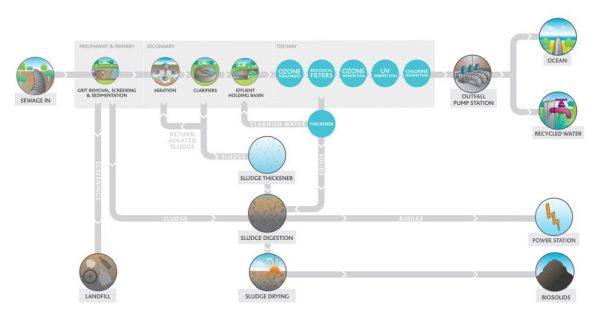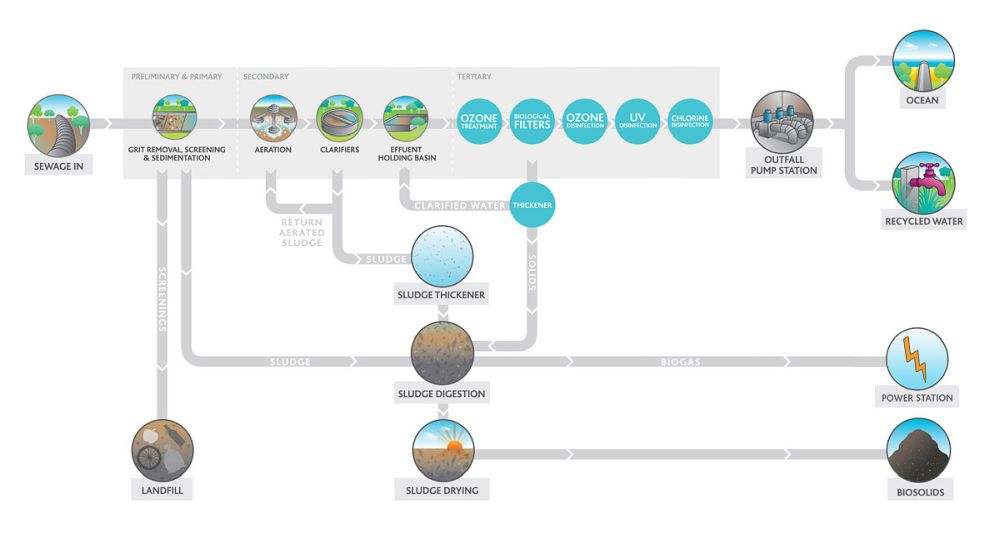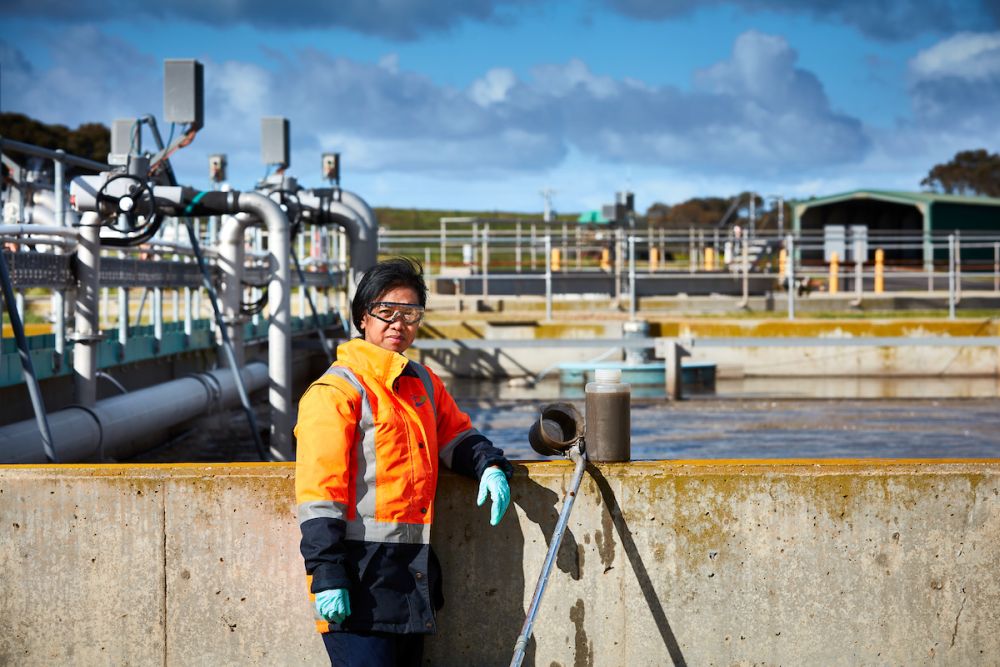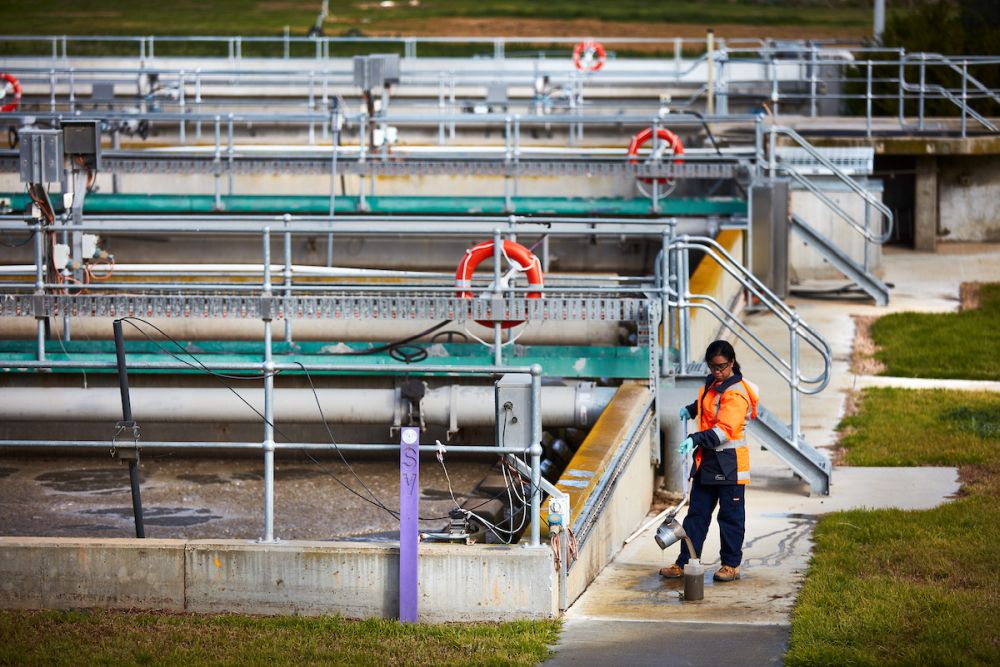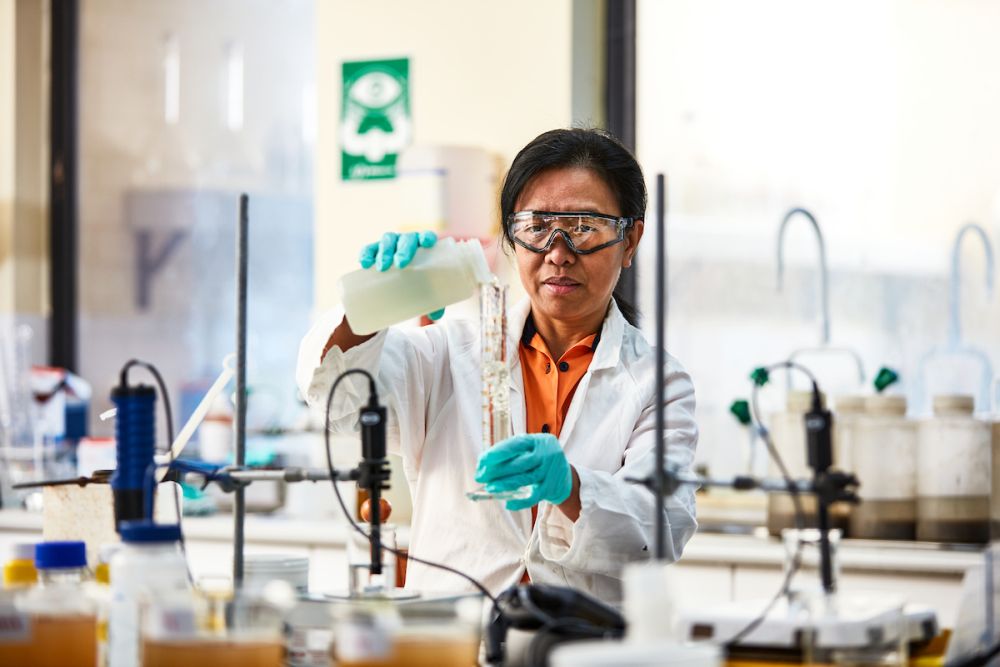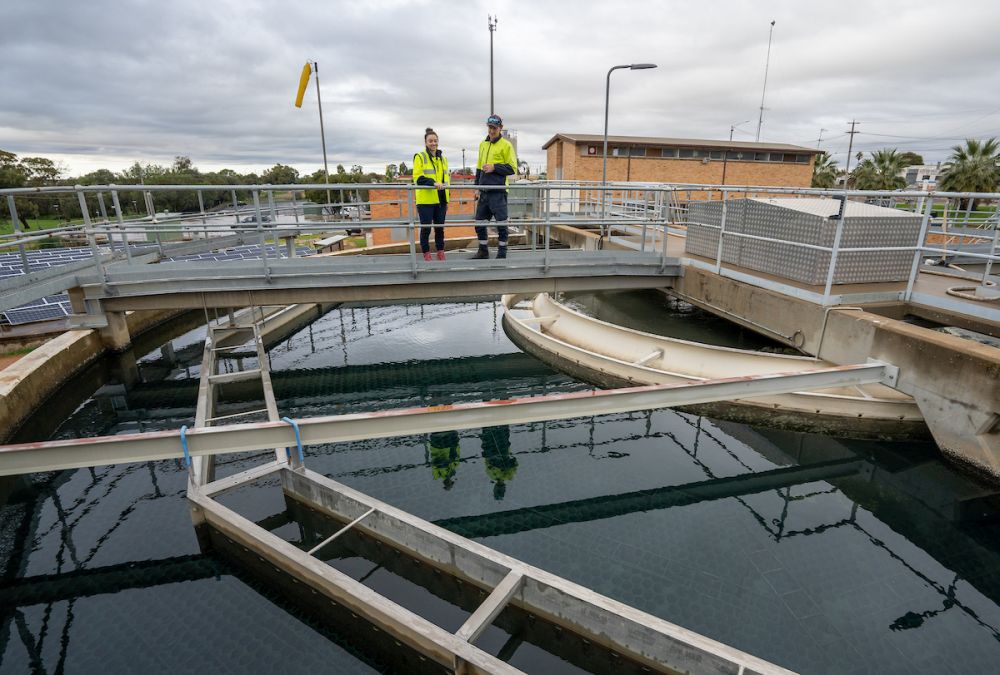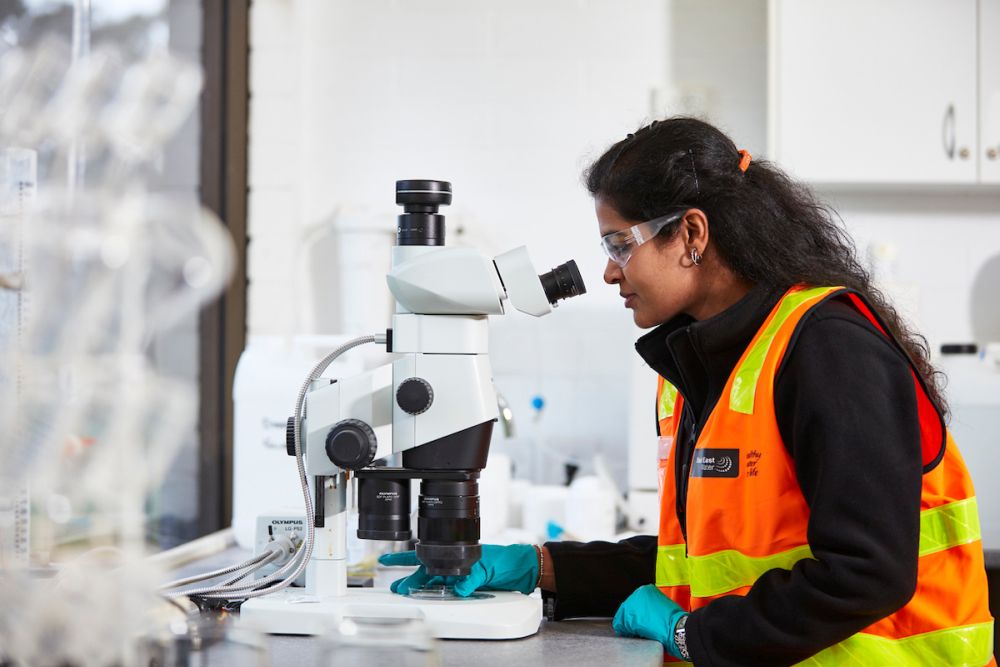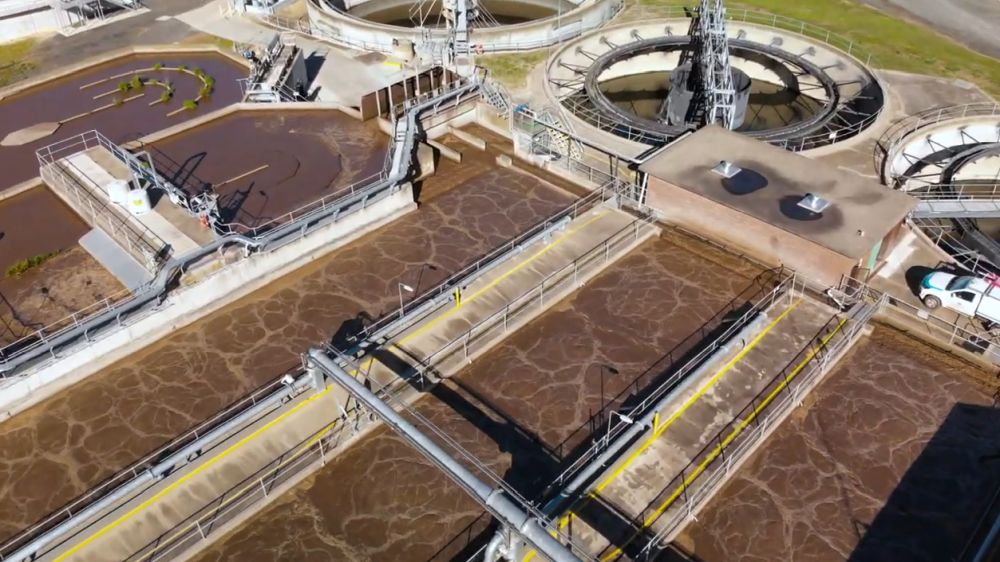What is recycled water?
A country as dry as Australia needs alternative water sources. Especially as our climate gets hotter and drier. Recycled water is treated wastewater that can be re-used for a range of purposes. It is a valuable source of sustainable water, which helps conserve our precious drinking water supplies and protect our environment.
Wastewater is the water that goes down the drain after we’ve used the toilet, taps, sinks, showers, washing machines and dishwashers in homes, businesses and industry.
It is treated at a wastewater treatment plant (also known as a water recycling plant) to a standard suitable for its intended use. Recycled water is usually delivered through purple pipes which are separate to pipes that supply drinking water. This way, nobody gets the wrong type of water.
Where it's used
Unlike water from our dams and rivers, the availability of recycled water is not dependent on rainfall. It is a resource that will increase as our population grows and our climate changes.
In Victoria, recycled water is only used for non-potable uses, including:
- agriculture (for watering crops and stock drinking water)
- in and around the home for flushing toilets and gardening
- commercial and industrial processes
- irrigation of sporting fields, gardens and parks
- supporting biodiversity and to sustain flows in rivers and wetlands
- water treatment processes.
The benefits of recycled water
Some households operate their own on-site water recycling systems. This uses ‘greywater’ from the shower or washing machine to water the garden, saving both water and money. In some countries such as the United States, recycled water is further treated and added to drinking water supplies.
Reusing more recycled water provides benefits to the community, including:
- reducing the amount of drinking water we take from our dams and rivers
- protecting our waterways and bays
- enabling the return of river water to Traditional Owners and the environment.
The most recent figures from the Victorian Water Accounts show 573,967 megalitres of wastewater was treated at Victorian treatment plants in 2023. Only a small portion of this was reused. Treated wastewater that is not reused is released to waterways, bays and the sea and meets strict environmental requirements.
One reason we don’t use more recycled water is the high cost of treatment and delivery to where it’s needed. To overcome this barrier, Integrated Water Management helps government, the water sector and communities work together to better plan, manage and deliver water in Victoria’s towns and cities.
Further resources
Below you can find a variety of resources to further research and understand recycled water in Victoria.

